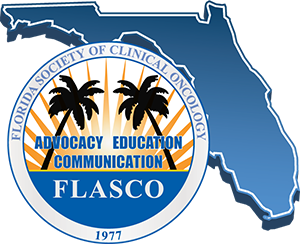FDA Grants Rare Pediatric Disease Designation to Cellectar Biosciences’ CLR 131 for the Treatment of Osteosarcoma

Cellectar Biosciences, Inc. (Nasdaq: CLRB), a clinical-stage biopharmaceutical company focused on the discovery, development and commercialization of drugs for the treatment of cancer, announces today that the U.S. Food and Drug Administration (FDA) has granted Rare Pediatric Disease Designation (RPDD) to CLR 131 for the treatment of osteosarcoma, a rare pediatric cancer. CLR 131 is Cellectar’s lead Phospholipid Drug Conjugate™ (PDC) product candidate.
“CLR 131 has demonstrated promise as an anticancer agent in preclinical and clinical settings, and we are working now to establish its impact on various rare and deadly pediatric cancers,” said John Friend, M.D., chief medical officer of Cellectar. “Cellectar is pleased to have the opportunity to work closely with the FDA on our planned Phase 1 trial for these indications and we remain committed to advancing the pediatric programs as rapidly as possible.”
Since May 2018 the company has received RPDD for CLR 131 in four pediatric cancers: neuroblastoma, rhabdomyosarcoma, Ewing’s Sarcoma and, most recently, osteosarcoma. Should any of these indications reach approval, the RPDD may enable Cellectar to receive a priority review voucher. Priority review vouchers can be used by the sponsor to receive Priority Review for a future NDA or BLA submission, which would reduce the FDA review time from 12 months to six months. Currently, these vouchers can also be transferred or sold to another entity. Over the last 16 months, five priority review vouchers were sold for between $110 million and $150 million each.
The FDA grants Rare Pediatric Disease Designation for diseases that primarily affect children from birth to 18 years old, and affect fewer than 200,000 persons in the U.S. This program is intended to encourage development of new drugs and biologics for the prevention and treatment of rare pediatric diseases.
About Osteosarcoma
Osteosarcoma derives from bone forming mesenchymal, or connective tissue, cells and is the most commonly diagnosed primary bone malignancy among children and adolescents. The incidence is about 4.4 cases per 1 million per year in children younger than 24 years [Mirabello 2009]. While there is a 70% cure rate among patients with localized disease, 5-year overall survival rates are approximately 20% for among patients who develop metastatic disease [Saraf 2018]. Additionally, among patients who experience disease progression or recurrence survival for is less than 30% [Chou 2005].
About CLR 131
CLR 131 is Cellectar’s investigational radioiodinated PDC therapy that exploits the tumor-targeting properties of the company’s proprietary phospholipid ether (PLE) and PLE analogs to selectively deliver radiation to malignant tumor cells, thus minimizing radiation exposure to normal tissues. CLR 131 is in a Phase 2 clinical study in R/R MM and a range of B-cell malignancies and a Phase 1b clinical study in patients with R/R MM exploring fractionated dosing. The objective of the multicenter, open-label, Phase 1b dose-escalation study is the characterization of safety and tolerability of CLR 131 in patients with R/R MM. Patients in Cohorts 1-4 received single doses of CLR 131 ranging from 12.5 mCi/m2 to 31.25 mCi/m2. All study doses have been deemed safe and well tolerated by an independent Data Monitoring Committee. The company is currently initiating a Phase 1 study with CLR 131 in pediatric solid tumors and lymphoma and is planning a second Phase 1 study in combination with external beam radiation for head and neck cancer.
About Cellectar Biosciences, Inc.
Cellectar Biosciences is focused on the discovery, development and commercialization of drugs for the treatment of cancer. The company plans to develop proprietary drugs independently and through research and development (R&D) collaborations. The core drug development strategy is to leverage our PDC platform to develop therapeutics that specifically target treatment to cancer cells. Through R&D collaborations, the company’s strategy is to generate near-term capital, supplement internal resources, gain access to novel molecules or payloads, accelerate product candidate development and broaden our proprietary and partnered product pipelines.
The company’s lead PDC therapeutic, CLR 131, is in a Phase 1 clinical study in patients with R/R MM and a Phase 2 clinical study in R/R MM and a range of B-cell malignancies. The company is currently initiating a Phase 1 study with CLR 131 in pediatric solid tumors and lymphoma and is planning a second Phase 1 study in combination with external beam radiation for head and neck cancer. The company’s product pipeline also includes two preclinical PDC chemotherapeutic programs (CLR 1700 and 1900) and partnered assets include PDCs from multiple R&D collaborations.
For more information please visit www.cellectar.com.
Forward-Looking Statement Disclaimer
This news release contains forward-looking statements. You can identify these statements by our use of words such as “may,” “expect,” “believe,” “anticipate,” “intend,” “could,” “estimate,” “continue,” “plans,” or their negatives or cognates. These statements are only estimates and predictions and are subject to known and unknown risks and uncertainties that may cause actual future experience and results to differ materially from the statements made. These statements are based on our current beliefs and expectations as to such future outcomes. Drug discovery and development involve a high degree of risk. Factors that might cause such a material difference include, among others, uncertainties related to the ability to raise additional capital, uncertainties related to the disruptions at our sole source supplier of CLR 131, the ability to attract and retain partners for our technologies, the identification of lead compounds, the successful preclinical development thereof, the completion of clinical trials, the FDA review process and other government regulation, the volatile market for priority review vouchers, our pharmaceutical collaborators’ ability to successfully develop and commercialize drug candidates, competition from other pharmaceutical companies, product pricing and third-party reimbursement. A complete description of risks and uncertainties related to our business is contained in our periodic reports filed with the Securities and Exchange Commission including our Form 10-K for the year ended December 31, 2017 and our Form 10-Q for the quarterly period ended June 30, 2018. These forward-looking statements are made only as of the date hereof, and we disclaim any obligation to update any such forward-looking statements.

